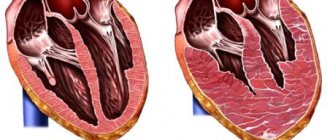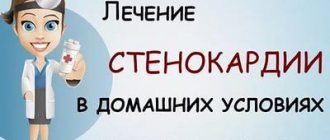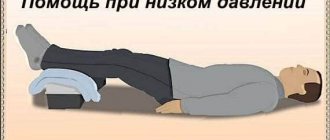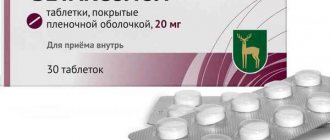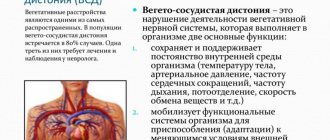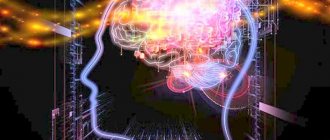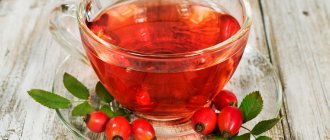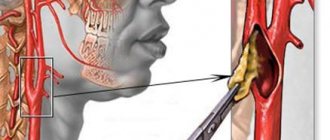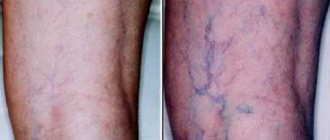Traditional recipes for low blood pressure
Herbal folk remedies for the treatment of low blood pressure have been used for a long time. Herbs such as chicory, lemongrass, eleutherococcus and others have been observed to increase heart rate. Therefore, folk remedies began to be prepared on their basis, which are successfully used in treatment today.
- Grind 100 grams of burdock, calamus and chicory and pour vodka in a dark glass container. Close, and after infusing for a week, take 5 drops per spoon of water after meals.
- Pour a tablespoon of dry collection of eleutherococcus, hop cones and lemongrass into a glass of boiling water and strain after 20 minutes of infusion. This folk remedy is useful to take half a glass in the morning before meals.
Various juices and extracts from medicinal plants are also widely used in folk recipes:
- Mix 2 tablespoons of ginseng root juice with 0.5 liters of black grape juice. Store the composition in the refrigerator and take 100 grams in the morning on an empty stomach.
- Mix the juice of one lemon, 50 grams of ginger and 300 grams of honey and take a teaspoon after meals.
Homemade grape wine, tinctures of rose hips, strawberries, and currants are also useful. Of course, you shouldn’t abuse them, but 50 grams a day before meals will be beneficial for low blood pressure.
In the treatment of hypotension, a person will be helped by anything that increases the heart rate. First of all, it is an active lifestyle, playing sports, and physical activity. In a word, it is necessary to force the heart to work at full capacity to increase blood flow.
Related materials:
- How to normalize blood pressure using folk remedies
- Quick treatment of high blood pressure with folk remedies
- Diuretics for blood pressure
- Treatment of hypertension with folk remedies at home
Popular recipes
Medicinal plants for tinctures and teas should invigorate and tone the body, increase blood pressure, improve the innervation of the autonomic nervous system and stimulate the activity of the central nervous system, and compensate for the lack of vitamins and minerals. The leaders in the list of herbal remedies for hypotensive patients are herbal adaptogens:
- ginseng;
- Schisandra chinensis;
- Eleutherococcus;
- Rhodiola rosea;
- Aralia;
- echinacea;
- St. John's wort;
- immortelle.
Return to contents
Herbs for alcohol tinctures
It is not worth treating hypotension with several tinctures at the same time, as this can lead to overexcitation and nervous system disorder. It is also important to observe the dosage and duration of use. In the pharmacy chain, such drugs are sold without a prescription, with a detailed diagram of the method of use. But with the available raw materials, some of them can be prepared independently.
Schisandra chinensis
This Far Eastern plant is called the “vitality berry.” Schisandra stimulates metabolism, improves oxygen metabolism and normalizes the functioning of the nervous system. For the tincture, you need to infuse crushed berries in alcohol in a ratio of 1:10 for 14 days. Take drops before meals: in the morning - 20, in the evening - 10. The course of treatment will be 2 weeks, take a break and repeat the dose.
Rhodiola rosea and ginseng
These herbs for hypotension have a similar therapeutic effect. In addition to the positive effect on the tone of the circulatory system, taking the drugs saturates the body with vital energy, increases performance and has a beneficial effect on the psychological state, giving vigor and confidence. The course is from 2 weeks, but not more than a month, 15-20 drops 2-3 times a day. Infuse the roots for 14 days in a dark glass container, shaking occasionally. Tinctures differ in the proportion of roots to vodka:
Calendula
Infusions of marigolds are used for heart ailments and pathologies associated with blood pressure. This plant is equally effective in helping hypertensive and hypotensive patients. It all depends on the cooking method. To raise blood pressure associated with massive blood loss and dehydration, the following recipe is recommended:
- Take 2 tbsp. l. dried flowers pour 100 g of alcohol.
- Place on the bottom shelf of the refrigerator for 3 days.
- Shake 1-2 times a day.
- Filter and add the juice of 1 lemon.
- Take 10-15 drops with water once a day.
- The therapeutic course will be 2 weeks.
Return to contents
Herbal infusions for tinctures
People whose illness is accompanied by depression and anxiety should choose St. John's wort or hawthorn as a phytodepressant. Pour 2 tbsp. l. St. John's wort herb with 2 cups of boiling water, leave for 40 minutes, take 100 ml three times a day. Tea can be sweetened with sugar or honey. Hawthorn is a quick remedy for hypertension, but its rich vitamin and mineral composition, as well as quercetin, which improves cerebral circulation, will also be useful for people with low blood pressure. However, it is better to take it as part of multi-component tinctures. The recipe is as follows:
Hawthorn is often present in medicinal herbs that are used to control blood pressure.
- Mix 2 parts each of hawthorn berries, rose hips, rhodiola root and 1 part each of nettle leaves and St. John's wort.
- Measure out 1 tbsp. l. mixture and add 250 ml of hot water.
- Leave for 1.5 hours.
- Take 100 ml three times a day.
Return to contents
Teas for hypotensive people
Traditional black tea is a wonderful way to raise blood pressure. The drink is drunk sweet, with honey, sweets, and cake. As for green tea, its tonic properties can only temporarily alleviate the condition of hypotension; frequent consumption of the drink reduces blood pressure. Rhodiola tea will be an express method for raising your tone when you are overtired. The recipe is:
- Take 1 tsp. chopped root.
- Pour 750 ml of boiling water and leave in a thermos for about an hour.
- It is better to drink a glass of honey 3 times a day.
Sometimes cold red Sudanese rose tea is recommended to lower blood pressure, and hot red tea to increase it. However, this is rather misleading. In the stomach, the drink will reach a temperature of 37 °C, cleanse and relax the blood vessels and, as a result, reduce blood pressure.
How to raise blood pressure with folk remedies for hypotension
Pink radiogram.
You will need to pour exactly 40 grams of grass into a whole bottle of high-quality vodka. Wait about 8 calendar days and take according to the following correct scheme: on the very 1st day of treatment, drink 5 drops no more than 2 times a day, then, starting from day 2, add 1 drop until the volume is exactly 20 drops and begin to reduce the dose 1 drop per day, up to the initial volume of 5 drops. Then for 1 month, drink 25 drops, always on an empty stomach. For the next 30 calendar days, a complete break is recommended, with the resumption of this course again, but after eating.
Thistle.
Grind its healing leaves completely to make 1 tbsp. l. Pour boiling water, wait about 25 minutes, and then strain. Drink 3 times a day, in a measured dosage of ¼ cup. Noticeable improvement will occur in about 1 week.
Calendula.
Buy calendula that is already of dry quality. Pour 2 tbsp. l of powder with high-quality alcohol in a volume of 100 ml. Keep the medicine for 2 days, strain, add lemon juice and always drink 10 drops for the entire period of the whole day.
Immortelle.
Use a solution based on immortelle only before meals, a volume of 20 drops no more than 2 times a day. You can buy it at the nearest pharmacy, or you can prepare it yourself. Just pour 10 grams of this medicinal herb into a kitchen mug of clean boiling water.
Thyme.
Brew medicinal flowers and leaves, just as you would brew regular tea. Drink it instead of your usual tea, and it will give you the same strength, strengthen the body and maximize its work.
Hypotension symptoms, prevention and folk remedies.
The onset of symptoms can be expressed by poor sleep (insomnia), or vice versa, falling asleep, frequent drowsiness, fatigue, general weakness, lack of vigor, feeling weak, apathy, fatigue. Even if a positive state appears, it does not last for long.
- A woman may experience a disruption in her menstrual cycle.
- When working, the heart rate increases.
- Possible motion sickness, drowsiness.
- Decreased memory, absent-mindedness is expressed.
- A strong sensitivity to either heat or cold is noticeably formed.
- Palms and soles of feet sweat.
- Pain in the area of your heart.
- Cloudiness in the eyes, a glare of goosebumps.
- Lack of air, fainting.
- , visual impairment.
- Nausea, in other cases vomiting.
1). Drink more clean water, up to about 8 cups per day, especially in the hottest weather.
2). Correct sitting position. The chairs should not be high, so that both knees can be located slightly higher than the hips.
3). Do not stand in one place for a long time or move your legs every time. This will ensure the flow of blood from the legs to the heart itself, which will prevent the pressure from decreasing.
4). Limit showers to no more than 7 minutes. Use cool water, as heat can increase pressure.
5). Do light exercises, especially while lying down, and this will definitely increase your blood pressure. Typically, a significant effect is observed after about a decade.
6). Do not overuse carbohydrates, because they have rapid absorption properties, which allows the intestines to immediately attract blood.
Stomach hypotension treatment with folk remedies.
This condition is characterized by a significant decrease in the overall tone of the muscles of all walls, as well as a decrease in the entire motor function of the stomach itself, which leads and is expressed by poor digestion of food.
Main events.
- Standardized work and physical education.
- Get quality rest with regular sleep.
- Small meals and not in large portions.
- Constant walks for up to 2 hours, 2 times a day, in the open clean air.
- Receiving a special massage.
- A well-prepared diet, do not drink with food.
- Including dairy products, fiber, and vitamins in your diet.
- Quitting habitual bad habits.
- Avoid all laxatives and products.
Information for everyone!!!
The use of folk remedies for hypotension is allowed and permitted only after the final consent of your trusted and competent doctor. This will allow you not to do any harm, because we are all different, and therefore our bodies are different, which can perceive treatment differently.
St. John's wort infusion
Traditional healers have preserved many excellent recipes for treating hypotension. It has long been noted that St. John's wort increases blood pressure. Therefore, this herb is often included in decoctions and tinctures for the treatment of hypotension.
The simplest and most effective remedy is the following infusion.
For preparation you will need St. John's wort leaves - 30 g. The plant material is poured with boiling water (1 liter). The solution must be infused for about 3.5 hours. It is recommended to keep the resulting composition cool. The prepared product is consumed twice a day, 100 ml.
A decoction of St. John's wort is effective. To make it you will need 1 tbsp. l. herbs, pre-chopped. The raw materials are poured with a glass of boiling water. The mixture should boil over low heat for about 15 minutes. After that, it is filtered. This amount of the product should be drunk in one day, taking the decoction in small sips.
Medicinal teas
Few people can do without regularly drinking hot or cold drinks. And there is no need to deny yourself the pleasure, because the body also receives the necessary fluid, which requires about 2-3 liters daily.
And yet the question arises: what tea increases blood pressure? Let’s try not only to figure it out, but also to provide recommendations for people suffering from chronic hypotension.
Vitamin, restorative tea
- stinging nettle – 15 grams;
- rose hips – 20 grams;
- St. John's wort - 10 grams;
- Rhodiola rosea root – 20 grams;
- hawthorn fruits – 15 grams;
- tall zamanika root – 20 grams;
Preparation:
- Mix all the ingredients of the recipe in the indicated proportions.
- Take one tablespoon of the mixture and brew it with one glass of boiling water.
- Cover with a lid and leave for one hour. Then we strain.
We drink the received vitamin herbal tea twice a day, half a glass, half an hour before meals.
Black tea
Black tea has long been a traditional drink in many families. There is a wide variety of this product in stores, so there is plenty to choose from.
But if we talk about the preferred option, then it is better to stick to tea bags, the fine grinding of which will give a much greater effect. The drink must be consumed with added sugar, and cakes or candies are suitable as a snack.
Green tea
There are many myths surrounding green tea. On the one hand, the drink has a tonic effect, because it contains 4 times more caffeine than coffee. But on the other hand, the flavonoids and antioxidants contained in tea reduce blood pressure.
This controversial issue has been studied by scientists from different countries. Scientific centers in Europe and America cited the results of laboratory tests that indicated a short-term increase in pressure.
Please note! But Japanese scientists conducted an experiment lasting six months and recorded a 5-10% decrease in blood pressure in the subjects. Thus, a simple conclusion suggests itself: a single dose of green tea has a tonic effect on the heart and blood vessels, and long-term use will lead to a persistent decrease in blood pressure. . Hibiscus for hypotension
Hibiscus for hypotension
A controversy has also flared up around hibiscus tea - Sudanese rose or hibiscus. There is an opinion that drinking it hot helps to increase blood pressure, and drinking it cold helps lower it.
However, from the point of view of common sense, the role of temperature in this process is not entirely clear, because after entering the stomach, the tea will quickly cool down to 37 ° C and be successfully absorbed into the systemic bloodstream.
As a result, the human body will receive a dose of antioxidants and flavonoids, the amount of which in the petals of the Sudanese rose is off the charts. It is these components that will help cleanse blood vessels of cholesterol, relax smooth muscles and, as a result, lower blood pressure.
Rhodiola
The same golden root is used to make tea for severe hypotension due to overwork. The drink will allow you to quickly get a boost of energy and restore vitality, and it is prepared as follows:
- Place 1 teaspoon of dried and crushed root in a saucepan.
- Pour 1 liter of boiling water.
- Simmer for 10 minutes.
- Leave for half an hour and strain.
- Drink 1 glass three times a day.
- It is advisable to add honey or sugar.
Conclusion
A short-term or long-term state of low blood pressure is characterized by a loss of vitality and general fatigue of the body.
Many people wonder: how to quickly increase blood pressure in order to feel cheerful and full of energy? Folk remedies based on medicinal herbal extracts can help cope with hypotension.
This is useful! Also, do not forget about a cup of aromatic coffee and strong black tea. In addition, your diet should include sweet, salty and iron-containing foods, which will help increase vascular tone and bring blood pressure back to normal.
Be healthy!
Symptoms and treatment of hypotension
If hypotension is diagnosed, the treatment of this disease deserves special attention. Hypotension is not just a decrease in blood pressure. It has features that significantly distinguish it from hypertension. Hypotension is diagnosed if blood pressure readings in men are 100/60 and in women 95/60. According to specialists, this disease is observed in women aged 30-40 years.
What factors lead to low blood pressure
Normal blood circulation in the human body is ensured by constant pressure in the vessels created by the contraction of the heart, the release of blood into the aorta and the muscle tone of the vascular wall. When arterial resistance weakens or circulating blood volume decreases, hypotension (low blood pressure) occurs. In this case, blood pressure is usually below 100/60 mm Hg in an adult. Today it has been proven that this condition is no less dangerous for the body than hypertension.
Why does blood pressure decrease?
The causes of hypotension are divided into two groups:
- physiological - with a hereditary predisposition (family peculiarity of the autonomic nervous system, asthenic physique), especially in girls; for professional dancers and athletes - with a trained heart;
- pathological - as a consequence of any disease, for example:
- heart failure after a heart attack, myocarditis, endocarditis, with atrial fibrillation, etc.;
- vegetative-vascular dystonia of the hypotonic type - more often in adolescents, can develop into a disease in older age;
- with depression, severe nervous exhaustion;
- as a consequence of a traumatic brain injury;
- for diseases of the endocrine system (pathology of the adrenal glands, thyroid gland);
- severe course of chronic diseases, sepsis, infections;
- alcohol intoxication;
- allergic reactions such as anaphylactic shock;
- elderly people may have orthostatic hypotension with a sudden change in body position from horizontal to vertical (with cerebrosclerosis);
- poor nutrition, anorexia, diets containing large quantities of foods that lower blood pressure - apples, grapefruits, cereals due to their high magnesium content, as well as low-fat milk, green vegetables, sardines, almonds, rich in calcium. Bananas, watermelons, zucchini, baked potatoes, dried apricots, oranges, tomatoes, tuna also lower blood pressure, as they contain a lot of potassium. Garlic, chokeberries, cranberries, lingonberries, peaches and apricots, as well as broccoli and dandelion have a hypotensive effect;
- dehydration (diarrhea due to intestinal infections, etc.);
- significant blood loss;
- comatose states (hypoglycemia in diabetes mellitus, etc.);
- side effects of certain medications. Medicines to lower blood pressure can be used by people as self-medication in inadequate doses. These are antihypertensive drugs from the groups of ACE inhibitors, adrenergic blockers, calcium antagonists, as well as diuretics, beloved by the population, which are used for any edema without consulting a doctor. In addition, antispasmodics (no-spa, drotaverine, papaverine) can reduce blood pressure by dilating blood vessels and are used to relieve pain. Some antibiotics (for example, macrolides) may enhance the hypotensive effect of the corresponding blood pressure medications. Side effects of the drugs are described in the instructions for use;
- use for various purposes of medicinal preparations containing herbs that lower blood pressure. The main ones are flowers and fruits of hawthorn, motherwort, valerian, cudweed, mint, and adonis. This also includes the fruits of viburnum, rose hips, calendula flowers, and raspberry leaves.
Signs and causes of hypotension
Hypotension (hypotension) is low blood pressure in men 100/65 mm/Hg. ,in women 95/60.
Blood pressure drops due to disruption of vascular activity in the cardiovascular system. In a normal state, the vessels quickly narrow and dilate, but in hypotensive patients the action of the vessels occurs in a slow rhythm. Blood supplies the organs and brain poorly.
Causes of low blood pressure:
- avitaminosis,
- cervical vertebra disease,
- diseases of the endocrine system.
Hypotonics are characterized by mental and emotional causes of stress, mental and physical tension. Changing weather conditions also affect their condition. The drop in pressure pushes them into hibernation.
People suffering from hypotension feel unwell already in the morning. For them, the usual things are headaches, reactions to the weather, changes in pressure, temperature and humidity, magnetic storms. They yawn often because they don't have enough oxygen.
How to treat hypotension at home
Proper first aid.
1). You must immediately lie down on a flat surface, and be sure to place a suitable cushion under both of your legs.
2). If it is not possible to lie down, it is recommended to sit down so that your head is slightly below your knees.
3). Calm down, stop being nervous, normalize your breathing so that it is as smooth as possible and preferably not deep, and it will immediately become easier.
4). In case of loss of consciousness, any person should moisten any available tissue with ammonia and place it under the nose.
5). When consciousness is restored, immediately drink sweet tea, always warm; coffee is allowed.
6). Call and get an ambulance.
Hypotension treatment at home.
Gradual normalization.
1). A quality night's sleep of approximately 9-10 hours and 1.5-2 hours of daytime sleep can provide excellent well-being, which will naturally ease your general condition. Constantly monitor mental activity and physical activity, constantly alternate them.
2). Any hypotensive person will need constant and daily exercise in the morning. This will warm up the muscles, provide the tissues with the necessary oxygen, and normalize the circulation of all blood. Use aerobics, running and other exercises to tone all muscles.
3). After any exercise or gymnastics, it will be very important to take a contrast shower. By expanding and narrowing your blood vessels, the lumen of the blood vessels will be ensured, and this will increase the tone. Alternating hot and cold should last about 7 minutes.
4). Immediately after taking a shower, proceed to a proper and complete breakfast. Breakfast will definitely help bring your blood pressure back to normal. A suitable breakfast of porridge, to which you can add some dried fruits, definitely sweet tea, a sandwich, cheese and butter.
5). The rest of the regimen consists of a suitable diet, which is also beneficial for low blood pressure. The most suitable products are considered to be any caviar, carrots, cheese, any liver, currants, pomegranate juice, cottage cheese.
Hypotension treatment with folk remedies.
1). The fastest and most emergency method is to immediately dissolve the salt, in the amount of 1 pinch, located at the very tip of the tongue, without washing it down with anything.
2). The most effective method is to pour ¼ teaspoon of cinnamon into 200 ml of pure boiling water, and after cooling, add 2 teaspoons of natural honey and drink on an empty stomach in the morning, and also in the evening before falling asleep, about 2 hours.
3). The softest and most delicious method to slightly increase blood pressure. Just eat ordinary bread with real honey, topped with a sprinkle of cinnamon.
Milk thistle.
If there is a constant manifestation of significant weakness, constant dizziness, the following remedy will be indispensable. Grind the dry herb of medicinal milk thistle to make ½ part of the powder. Buy a bottle of high-quality vodka and infuse the powder in it for 14 calendar days. Choose the darkest place, the temperature should correspond to room temperature.
Don’t forget to shake this tincture at least once a day. When the time comes, carefully strain our resulting tincture and pour everything into another suitable container. The dose consists of exactly 50 drops, before meals, no more than 3 times a day. To avoid fatigue, simply eat its fresh roots along with healing celery leaves.
Pomegranate.
Many people with low blood pressure are overcome by dizziness, and weakness and malaise continue to be present. To overcome all this, drink a whole glass of juice every day. It is allowed to add sugar. Make sure it's real juice. If you prepare pomegranate juice yourself, then dilute the juice with water 1 to 3. But remember that this method is unfavorable for tooth enamel and stomach diseases.
If you take up the treatment of hypotension with folk remedies, then read all the reviews of those who were cured. Many people have used this treatment and it has led them to the desired result. Coffee helps almost everyone, but this is not a long-term effect. Many pharmacies regularly sell ready-made tinctures of ginseng, eleutherococcus, and lemongrass.
Drug therapy of pathology
When hypotension is severe, doctors face certain challenges. The therapy is designed to:
- improve central and peripheral hemodynamics;
- normalize systolic and diastolic blood pressure;
- increase the tone of blood vessels;
- stabilize the activity of all levels of the vascular tone regulation system.
The basis of therapy for hypotension is a healthy lifestyle combined with the use of tonic drugs. For auxiliary treatment, caffeine-containing products are used (Acepar, Citramon, Pentalgin-N). How to deal with hypotension more radically? To achieve maximum effect use:
- Psychotonics;
- Analeptics;
- Adrenergic agonists (usually for emergency use);
- Spinal cord stimulants;
- M-anticholinergics;
- Nootropics;
- Plastic action agents, energizers;
- Vitamins.
A special type of pathology is drug-induced hypotension. Cardiovascular disorders usually require specific medications that lower blood pressure. Errors in their use contribute to the development of drug-induced hypotension. Drugs that can cause a pathological condition include:
- Nitroglycerine;
- ACE inhibitors;
- means of central influence;
- sartans;
- beta blockers;
- diuretics;
- calcium channel blockers.
Medicines should be taken strictly as prescribed by the doctor. If uncharacteristic symptoms appear after taking medications, you must call an ambulance.
Psychotonics
Stimulates the central and peripheral parts of the adrenergic system. They are used for asthenia, while a moderate increase in blood pressure practically does not cause an increase in heart rate. Sydnofen, Mesocarb, Mexidol, Sydnocarb are usually prescribed. These drugs act gradually, without producing pronounced responses from the central nervous system. May occur:
- headache;
- anxiety;
- irritability.
If side effects occur, the dosage of the drugs is reduced, and sometimes they are stopped altogether. Sidnofen has pronounced antidepressant properties, and Mexidol treats asthenia, having a beneficial effect on cerebral blood flow.
Analeptics
They excite the posterior part of the brain, mainly its vascular center. Analeptics for hypotension:
- reduce fatigue;
- stabilize mood;
- contribute to increased performance;
- have a beneficial effect on short-term memory.
But this group of drugs also has certain disadvantages, they are:
- cause a painfully elevated mood (euphoria);
- distract attention;
- require a fairly long break after completing a significant amount of work.
Analeptic medications for hypotension (Cordiamin, Centedrin) are used situationally or in short courses.
Adrenergic agonists
By stimulating peripheral alpha-adrenergic receptors, they cause constriction of blood vessels and a decrease in blood flow. The drugs are indispensable for providing emergency assistance in pre-fainting conditions against the background of a sharp decrease in blood pressure (Mezaton, Fethanol). Certain adrenergic agonists are included in the basic treatment regimens for hypotension (Gutron, Regulton).
Gutron has a prolonged effect without affecting the central nervous system. When taken simultaneously with an increase in blood pressure, cerebral blood flow improves and the ability to tolerate physical activity increases. Sometimes taking the drug causes arrhythmias and dose-dependent pain in the heart area. Overdose is accompanied by:
- chilliness;
- the appearance of “frosty” pimples in the back of the head;
- urinary disorders;
- rare heartbeat.
Atropine is used to relieve symptoms of overdose. Long-term use of adrenergic agonists requires examination of the kidneys. Regulton effectively relieves the symptoms of hypotension. But at the same time, a certain increase in heart rate is observed, and tolerance to physical activity does not change. For intense tachycardia, Regulton is not prescribed.
Spinal cord stimulants
Securinin stimulates the activity of the spinal cord well. It is less active than Strychnine, but has significantly fewer side effects. In some cases, the drug is contraindicated, these are:
- tendency to have seizures;
- hyperthyroidism;
- bronchial asthma;
- pregnancy.
The product is used to improve performance and to combat manifestations of asthenia.
M-anticholinergics
They are used for hypotension combined with one of the types of VSD - vagotonia. M-anticholinergics (Bellaspon, Belloid) block the interaction of cholinergic receptors with acetylcholine (a mediator of the parasympathetic nervous system). Drug overdose is characterized by:
- jumping pulse;
- dilated pupils;
- blurred vision at close range;
- dryness and redness of the skin;
- hyperthermia;
- Difficulty swallowing caused by dry mouth.
Manifestations of acute psychosis are possible.
Nootropics
They are not able to constrict blood vessels, but provide maximum effectiveness of vasoactive agents. They activate metabolic processes occurring in the central nervous system and improve regional blood circulation. Nootropics (Piracetam, Pantogam) have a beneficial effect on certain brain functions:
- facilitate thought processes;
- improve memory;
- I stimulate the adaptive abilities of the brain.
Read also
What you need to know about ischemic stroke?
The drugs do not activate the body’s psychomotor function and are not addictive. Excellent stimulation of metabolic processes in children and adults. They are used alone and in combination with vasoactive agents. Nootropics are often prescribed for hypotension due to asthenia or mild depression, accompanied by lethargy and memory loss. When taking medications, blood pressure may normalize without improving your overall health. It is recommended to use other medications in combination with them.
Plastic influence agents, energizers
Used to prevent various types of overvoltage and to maintain performance. They restore cell structure and activate biochemical processes. For these purposes the following is used:
- Potassium orotate – has antidystrophic properties, stimulates the biosynthesis of nucleic acids, improves tissue regeneration;
- L-carnitine – actively participates in processes that ensure muscle activity;
- Lipocerebrin - used for nervous and physical overload, decreased performance;
- Lecithin-cerebro - prescribed for emotional stress and significant physical exertion;
- Riboxin – activates metabolic processes, helps enrich tissues with oxygen;
- Asparkam - recommended for significant physical activity in order to maintain the myocardium;
- Glutamic acid – used to maintain the body after physical and mental stress;
- Methionine – regulates liver function, eliminates the effects of intense physical activity.
Plastic agents mainly affect the production of nucleic acids and proteins. Energizers increase muscle potential and activate the synthesis of energy resources necessary for the body.
Vitamins
In case of hypotension, it improves performance well. Vitamins have a targeted effect on the body:
- improve the activity of the central nervous system, stimulate tissue nutrition and metabolic processes (A, C, B1, 2, 3, 6, 15);
- support the ability of tissues to produce energy-rich molecules when necessary (C, B1, 2, 5, 6, 15);
- stimulate the production of proteins and regenerative processes, activate plastic metabolism (folic acid, B1, 2, 3, 5, 6, 12, 15);
- enhance the production of central nervous system mediators and myelin, the “protector” of the sheath of nerve trunks (B1, 2, 3, 6, 12).
The most effective are complexes with optimal dosages of vitamins, micro- and macroelements, and minerals (Vitamount complete, Polivit for adults). For hypotension it is important:
Vitamins are needed by the body in relatively small quantities.
The “bridge” between drug therapy and prevention is nutritional supplements. For hypotension, the drugs Tonus (pollen), Apilak (royal jelly of bees) and Cigapan (reindeer antlers) are used. In addition, adaptogens of plant origin (ginseng, eleutherococcus, lemongrass) are widely used in the treatment of hypotension.
Drug treatment of hypotension is indicated when there is a significant deterioration in the patient’s health. A specialist should select treatment regimens and dosages of drugs based on the symptoms and characteristics of his body. However, therapy should begin with a review of lifestyle and proper nutrition.
Treatment of arterial hypotension
The basis of treatment for arterial hypotension is a combination of a healthy lifestyle with proper rest and the use of tonics. As an auxiliary therapy, caffeine or caffeine-containing drugs are prescribed - Algon, Acepar, Pentalgin-N, Perdolan, Citramon, Citrapar, etc. The use of adaptogens - herbal preparations with a general tonic effect - tinctures of ginseng, eleutherococcus, echinacea, pantocrine, lemongrass, etc. is also effective.
Treatment of hypotension also involves eliminating factors that contribute to lowering blood pressure (extreme physical activity, professions that require long periods of standing in an upright position, etc.). You can combat hypotension with the help of physiotherapeutic procedures carried out 1-2 times a week for a long time. This can be therapeutic massage, sauna therapy, various types of electrotherapy (electrosleep, darsonvalization, galvanic collar), hydrotherapy (circular and contrast showers, baths, etc.).
Non-traditional methods of treating hypotension
At home, hypotension can be managed by consuming medicinal herbs, following a diet, and monitoring the ratio of exercise and rest. The best means of restoring normal blood pressure levels are light physical activity in the form of walking, swimming, and outdoor games. Rest is also important for the treatment of hypotensive patients, since long sleep (at least 10-12 hours) is a protective reaction of the body for them. People with hypotension are susceptible to sudden, brief loss of consciousness—fainting. First aid consists of giving the body a horizontal position, in which the level of the head should be lower than the level of the legs. Taking the “coachman pose” is also effective.
Not least in the treatment complex is a special diet for hypotension. For people suffering from hypotension, it is very useful to drink coffee and tea - natural tonic substances. In addition, vascular tone is affected by the amount of salts in the body, so hypotensive patients are recommended to eat salty foods. Proteins and vitamins B and C are useful and effective for the prevention and treatment of hypotension. Therefore, the daily diet of patients suffering from hypotension should include foods that increase blood pressure - liver, milk, eggs, vegetables, fruits, herbs, etc. It is recommended to include nuts, cheese, sorrel, carrots, stimulating seasonings and spices (cloves, mustard, horseradish root, black and red pepper, raw onion) in the menu of elderly people with low blood pressure. All of these products contribute to increased blood pressure.
Phytotherapy
For the treatment of arterial hypotension, it is advisable to use various preparations from medicinal plants. Here are several options for combinations of herbs, the use of which helps fight hypotension at home.
- An infusion from a collection of wormwood herbs, tartar and chamomile flowers, lemon balm leaves, angelica rhizomes and rose hips.
- A collection of wormwood herbs, immortelle flowers, schisandra shoots, viburnum leaves, aralia roots and valerian rhizomes.
- A collection of rose hips, viburnum shoots, tansy seeds, peppermint leaves, oat straw, celandine grass and hawthorn flowers.
Today there are quite a lot of similar recipes for herbal remedies to increase blood pressure, but using folk remedies for hypotension without prescribing and selecting appropriate dosages of herbal preparations by a doctor is inappropriate and sometimes unsafe.
Before undertaking treatment for arterial hypotension, a mandatory consultation with a specialist is necessary who will determine the cause of the disease and develop tactics to combat it.
Symptoms of arterial hypotension
The main symptoms of hypotension take the form of:
- throbbing pain in the back of the head, temples;
- dizziness;
- darkening of the eyes;
- lack of oxygen;
- rapid heartbeat;
- nausea;
- chest pain;
- coldness or numbness of the feet and hands;
- general weakness;
- drowsiness;
- decreased performance.
When blood pressure drops, a person is bothered by thirst and blurred vision may occur. With a significant decrease in blood pressure, semi-fainting states or full-blown fainting develop.
Hypotension is characterized by a slowdown in blood flow in the body, leading to forced passivity, weakening of memory, absent-mindedness, and apathy. Unlike hypertensive patients, people suffering from hypotension are more susceptible to depression, emotional instability, causeless irritability, and mood swings.
Causes of drug-induced hypotension
Treatment of cardiovascular diseases involves taking several groups of medications. Most often, antihypertensive/hypertensive drugs are combined with other medications, for example, diuretics, sedatives, and others. Their incorrect use can lead to various pathologies, including drug-induced hypotension.
If the prescribed treatment causes discomfort, you should stop taking it and consult your doctor.
The disease can develop due to:
- ACE inhibitors;
- Drugs of the group - sartans;
- Diuretics;
- Calcium antagonists;
- Tranquilizers;
- Beta blockers;
- Organic nitrates (Nitroglycerin).
When using medications from these groups, you should be careful and not exceed the dosage. In addition to drug-induced hypotension, other dangerous pathologies incompatible with life may develop.
Consequences of pathology
If this disease lasts for a long time, it can lead to unpleasant consequences. Why is hypotension dangerous? It can lead to the following conditions:
- Development of heart failure, which leads to more serious illnesses.
- Ischemic stroke. The greatest risk of its occurrence is observed in people with a sharp drop in blood pressure.
- The development of dementia as a result of regular sudden changes in pressure. Most often this occurs in older people. This process does not depend on the intellectual development of a person.
- Myocardial infarction. Occurs when there is no blood flow to the heart muscle.
- Weak sensitivity of the upper and lower extremities. The patient also has constantly cold hands and feet, regardless of weather conditions.
Identifying the disease in the early stages of its development will help to avoid many unpleasant and dangerous consequences. To avoid it, you need to strictly follow the recommendations of your doctor, take medications correctly, and at the first indisposition, alert a specialist.
To prevent hypotension, you need to follow a daily routine, eat right, and devote enough time to walks in the fresh air and physical activity. It is also necessary to contact a specialist if certain health problems arise. After all, with timely treatment of diseases, many consequences and complications can be avoided.
If your blood pressure drops sharply, what should you do?
Do a simple exercise: sit on a chair with your legs apart and your hands behind your head. Take a deep breath and slowly lower your head towards your knees. Straighten up and exhale sharply. Repeat the exercise 3 times.
When the pressure drops, it is better not to lie or sit, but to walk around, and you can do some light work (without bending). Sometimes that's enough to make you feel better. If you get sick on the street, it is better to continue moving and even speed up the pace. If possible, go to a cafe and drink a cup of coffee or strong sweet tea with lemon.
The simplest breathing exercise is of some benefit for hypotension: take a deep breath in through one nostril, exhale through the other and hold your breath for a few seconds (starting with 5 inhalations and exhalations, gradually increase their number to 20). Repeat 5-6 times 3 times a day.
In general, the best medications for hypotension are walking, swimming, cycling, and team sports (for example, tennis, volleyball, badminton). Yoga is very useful.
